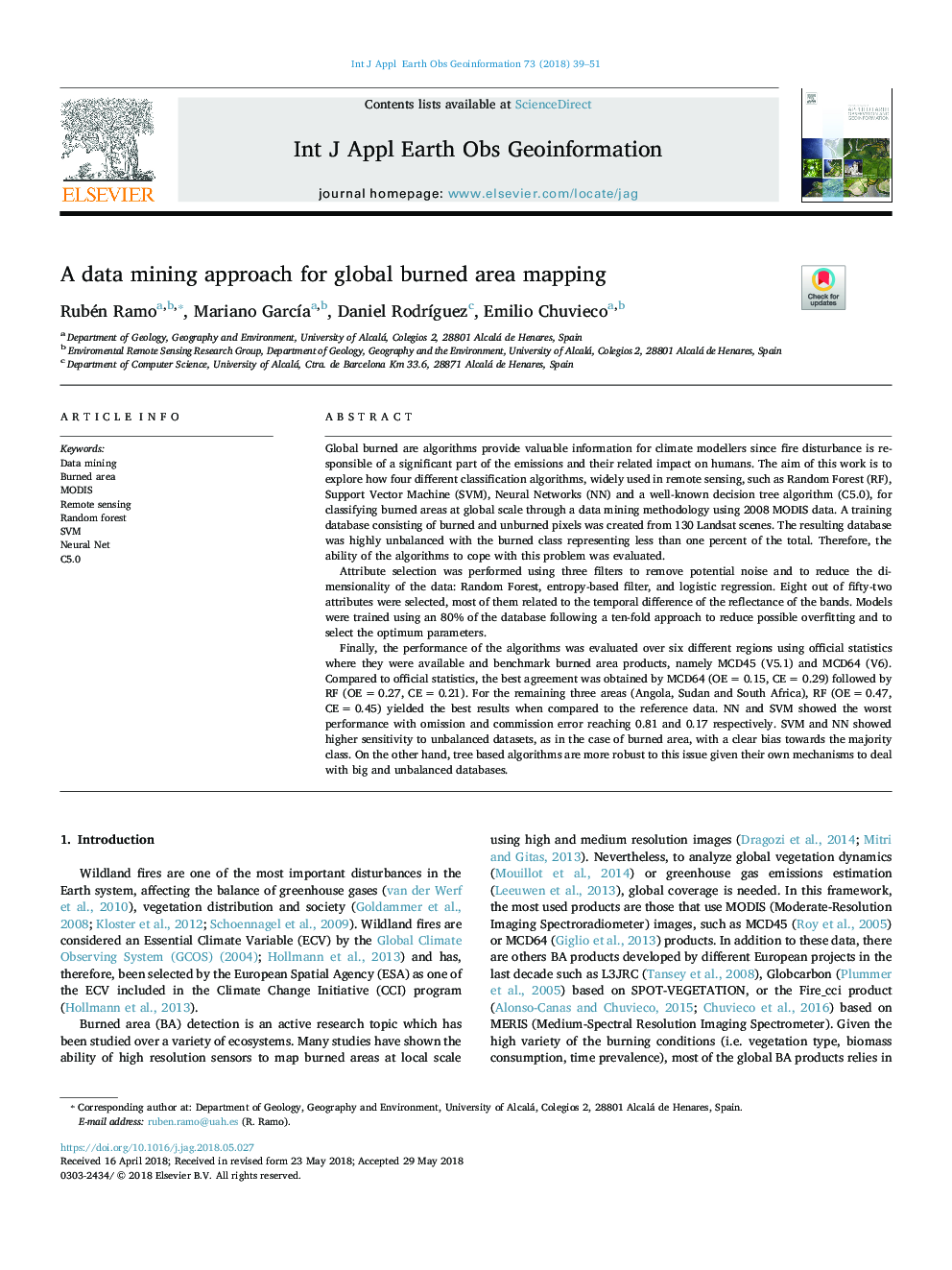| Article ID | Journal | Published Year | Pages | File Type |
|---|---|---|---|---|
| 8867679 | International Journal of Applied Earth Observation and Geoinformation | 2018 | 13 Pages |
Abstract
Finally, the performance of the algorithms was evaluated over six different regions using official statistics where they were available and benchmark burned area products, namely MCD45 (V5.1) and MCD64 (V6). Compared to official statistics, the best agreement was obtained by MCD64 (OEâ¯=â¯0.15, CEâ¯=â¯0.29) followed by RF (OEâ¯=â¯0.27, CEâ¯=â¯0.21). For the remaining three areas (Angola, Sudan and South Africa), RF (OEâ¯=â¯0.47, CEâ¯=â¯0.45) yielded the best results when compared to the reference data. NN and SVM showed the worst performance with omission and commission error reaching 0.81 and 0.17 respectively. SVM and NN showed higher sensitivity to unbalanced datasets, as in the case of burned area, with a clear bias towards the majority class. On the other hand, tree based algorithms are more robust to this issue given their own mechanisms to deal with big and unbalanced databases.
Related Topics
Physical Sciences and Engineering
Earth and Planetary Sciences
Computers in Earth Sciences
Authors
Rubén Ramo, Mariano GarcÃa, Daniel RodrÃguez, Emilio Chuvieco,
